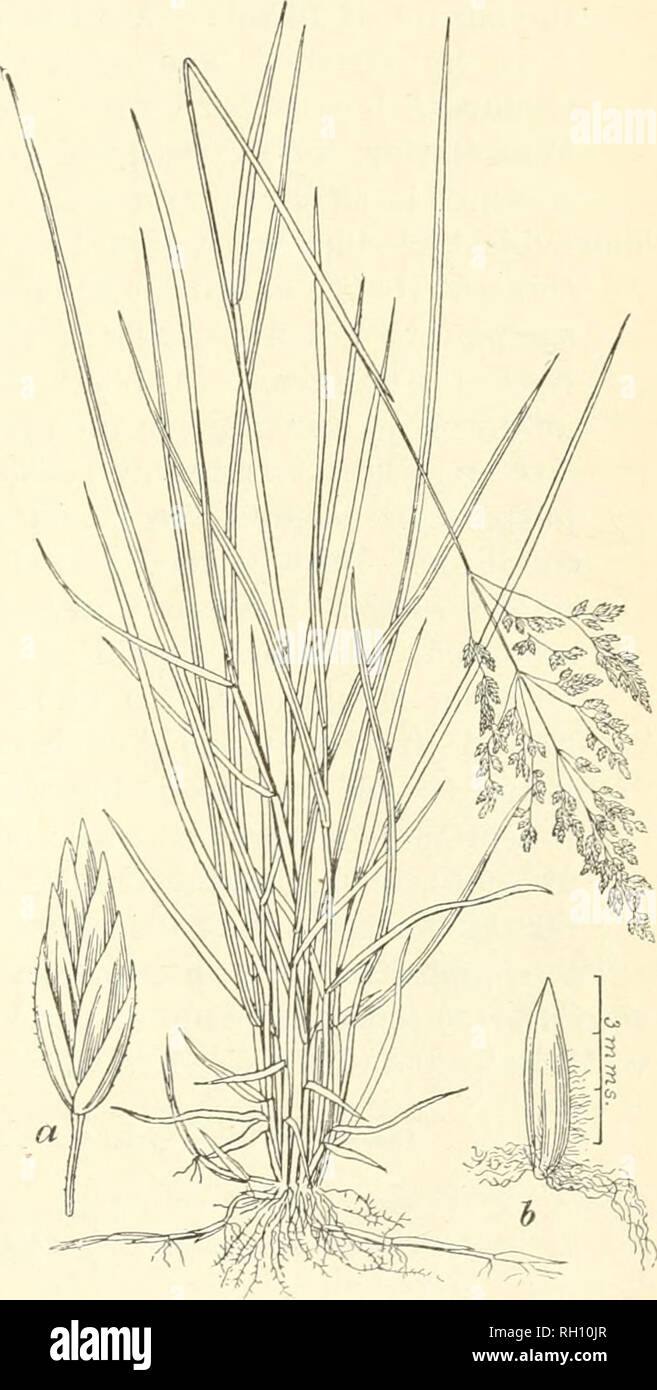. Bulletin. Gramineae -- United States; Forage plants -- United States. 25 Hmigarian or Smooth Brome (Bromus inermis Leyss.) (Qg. G) with- stands drouglit and cold, and is perfectly adapted to conditions existing in Iowa. It makes excellent growth and more nearly reaches the ideal of a farmer's grass than any other sort intro- duced in recent years. Under favorable conditions two crops can be cut in a single season, and the aftermath is excellent. Hunga- rian Brome commends itself to the farmers of central and western Iowa. This is the Eussian grass or Russian Brome- grass of some writers. Ken

Image details
Contributor:
Library Book Collection / Alamy Stock PhotoImage ID:
RH10JRFile size:
7.1 MB (268.1 KB Compressed download)Releases:
Model - no | Property - noDo I need a release?Dimensions:
1124 x 2222 px | 19 x 37.6 cm | 7.5 x 14.8 inches | 150dpiMore information:
This image is a public domain image, which means either that copyright has expired in the image or the copyright holder has waived their copyright. Alamy charges you a fee for access to the high resolution copy of the image.
This image could have imperfections as it’s either historical or reportage.
. Bulletin. Gramineae -- United States; Forage plants -- United States. 25 Hmigarian or Smooth Brome (Bromus inermis Leyss.) (Qg. G) with- stands drouglit and cold, and is perfectly adapted to conditions existing in Iowa. It makes excellent growth and more nearly reaches the ideal of a farmer's grass than any other sort intro- duced in recent years. Under favorable conditions two crops can be cut in a single season, and the aftermath is excellent. Hunga- rian Brome commends itself to the farmers of central and western Iowa. This is the Eussian grass or Russian Brome- grass of some writers. Kentucky Blue-grass (Poa pratensis L.) (fig. 7) is the chief pasture grass of cen- tral and western Iowa, though not so prominent in northwestern Iowa. It does fully as well in and about Jefterson, Carroll, and Logan as in north- eastern, southwestern, and southern Iowa. South- western Iowa has some- times been called the Blue- grass region of the State. The spring of 189G in cen- tral Iowa was early, and in many cases cattle were turned into the pastures before the 1st of May, from â which time to the loth of July this grass is gener- ally at its best. Although checlvcd by a short mid summer drought, a vigor- ous growth was induced by rains in the latter part of July, so that during Au- gust and September pas- tures looked as green as they did in May. It is not uncommon for many farmers to feed in August, but the excellent condition of the grass pasture rendered this entirely unnecessary in 1896. In 1895, and especially 1894, because of the great drought in Iowa, many farmers fed green corn fodder in August. Blue-grass can not, therefore, be depended on every season, but it is reliable and safe as a pasture grass most seasons. Green corn fodder is a safe sub-. FiG. 7.âKentucky Blue-graas (Poa pralensis): a, a apikelet; h, the Horet, «lu>«ing the hairs or wool at the baae.. Please note that these images are extracted from scanned page images that may have been digitally